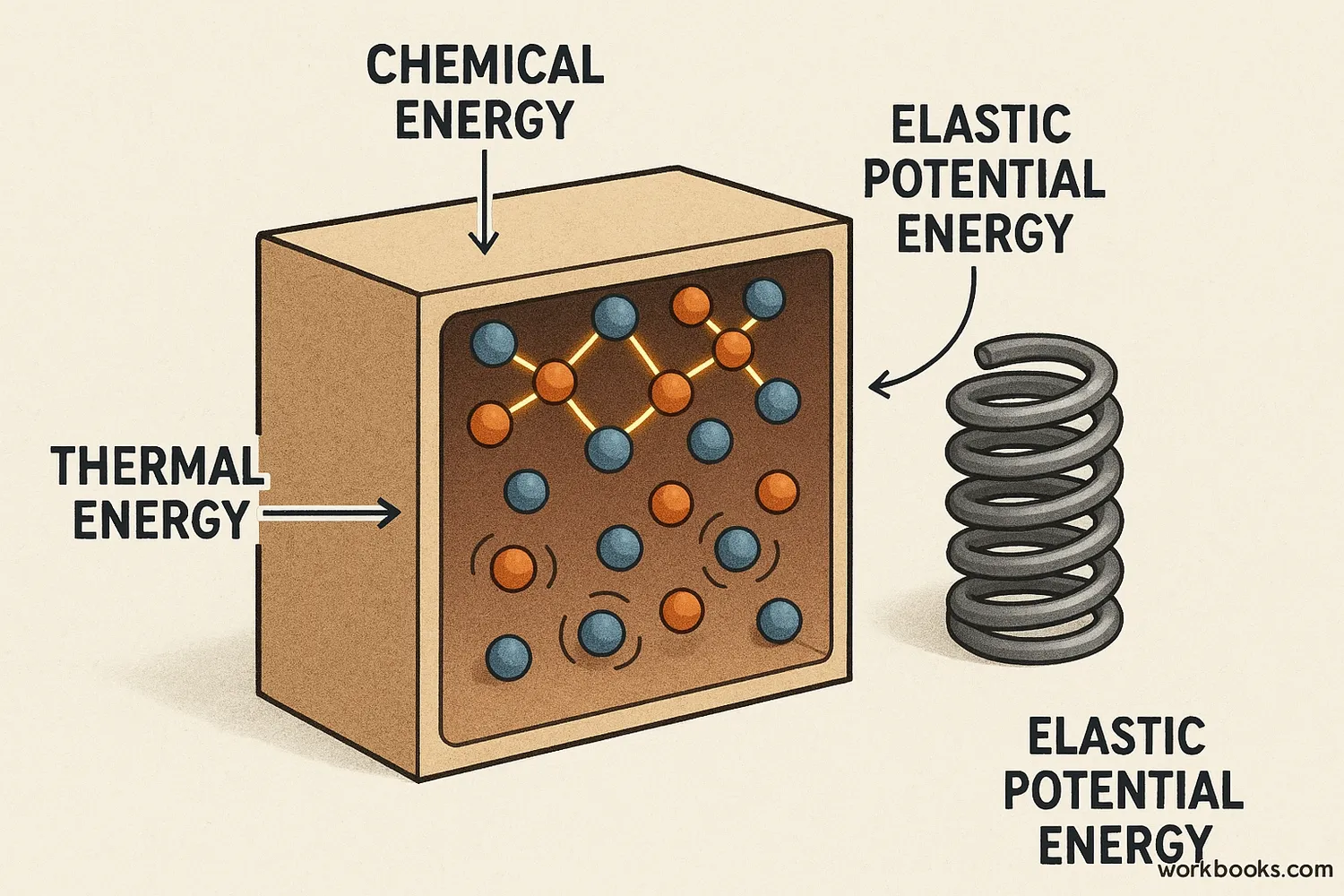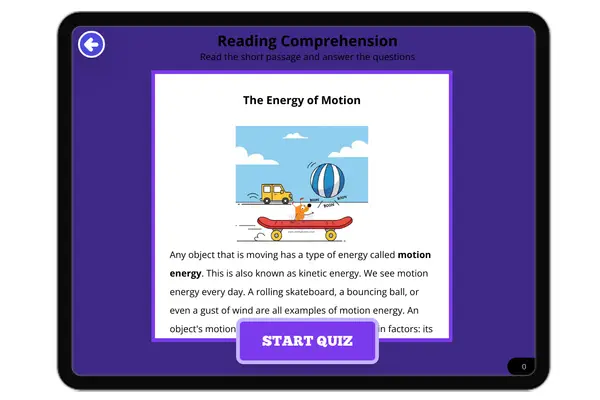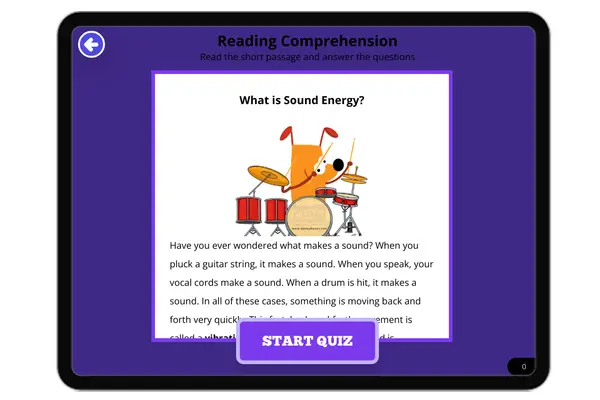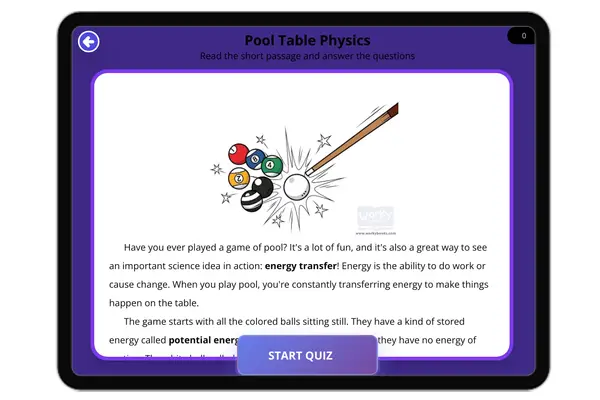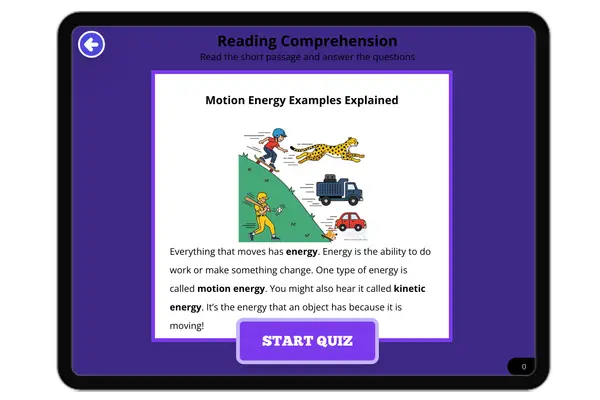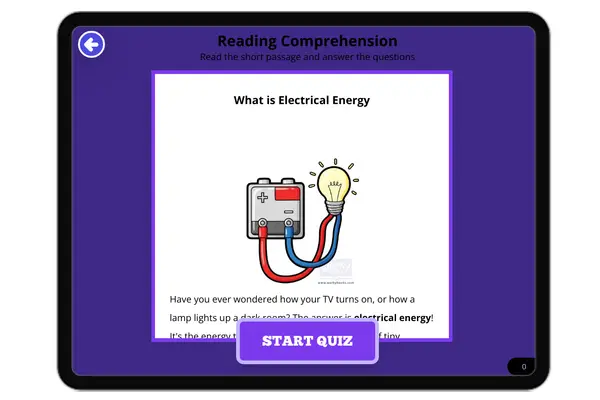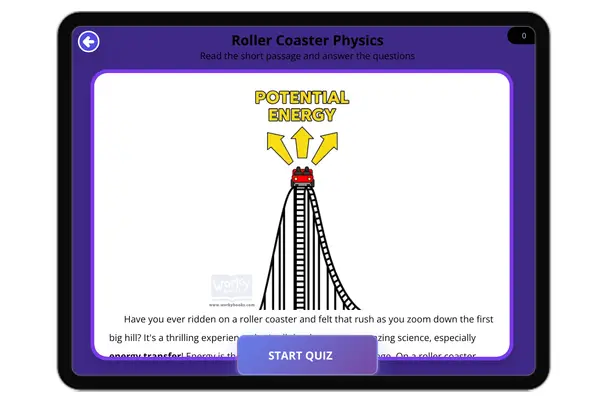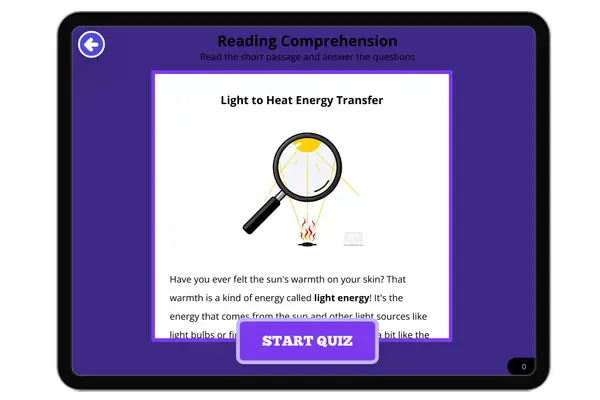Which form of Energy is a Solid? — Reading Comprehension
Premium Resource
Grades
- 3
- 4
- 5
- 6
- 7
- 8
PRINT+DIGITAL RESOURCE
This learning resource is available in interactive and printable formats. The interactive worksheet can be played online and assigned to students. The Printable PDF version can be downloaded and printed for completion by hand.
About This Reader
This science passage for middle school students explores the core concepts of energy, defining it as the ability to do work. It focuses on the distinction between potential (stored) and kinetic (motion) energy, providing relatable examples like a roller coaster. The passage then delves into how solid objects are not a form of energy themselves but are crucial for storing it. It explains different types of energy storage in solids, including chemical energy in fuels like wood and coal, elastic potential energy in objects like springs, and thermal energy through molecular vibration. The text also connects these concepts to real-world applications such as batteries and flywheels, making the abstract concept of energy tangible and relevant to students. This content aligns with NGSS standards related to the relationship between energy and matter.
Perfect For:
👩🏫 Teachers
- • Reading comprehension practice
- • Auto-graded assessments
- • Literacy skill development
👨👩👧👦 Parents
- • Reading practice at home
- • Comprehension improvement
- • Educational reading time
🏠 Homeschoolers
- • Reading curriculum support
- • Independent reading practice
- • Progress monitoring
Reading Features:
📖
Reading Passage
Engaging fiction or nonfiction text
❓
Comprehension Quiz
Auto-graded questions
📊
Instant Feedback
Immediate results and scoring
📄
Printable Version
Download for offline reading
🔊
Read Aloud
Voice-over with word highlighting


